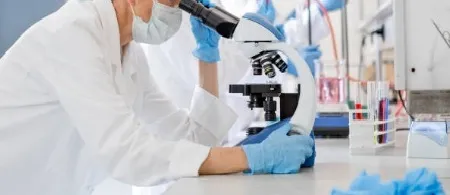Intensive farming may actually cut future pandemic risk: Scientists
Scientists have thwarted the idea that intensive livestock farming is causing pandemics, and showed that it could actually reduce the risk of future pandemics compared to ‘free range’ farming.
In the wake of Covid-19, modern industrial farms with tightly-packed livestock were projected as potential hothouses for further pandemics caused by “zoonotic” diseases: those transmitted from animals to humans.
On the contrary, free-range alternatives, which require far more land, would increase encroachment on natural habitats and create ever more potential for diseases carried by wild animals to come into contact with humans and jump the species barrier, said a team of scientists from the University of Cambridge, UK.
“High-yield or ‘intensive’ livestock farming is blamed for pandemics, but those calling for a move away from intensive farming often fail to consider the counterfactual — the pandemic risk of farming less intensively and particularly the consequences for land use,” said lead author Harriet Bartlett, a doctoral candidate at Cambridge’s Department of Zoology.
“Low-yield farms need far more land to produce the same amount of food compared with high-yield farms. A widespread switch to low-yield farming would result in the destruction and disturbance of vast areas of natural habitats. This increases the risk of viral spillover by disturbing wildlife that may well host the next pandemic virus and increasing contact between wildlife, people and livestock,” Bartlett said.
In the paper published in the journal Royal Society Open Science, the researchers point out that, globally, humans now produce four times more meat than in the 1960s. Most of our meat, eggs and dairy now come from intensive farms, but such farms are thought to be risky due to their crowded conditions which increase the chance of diseases ataking off’ and spreading rapidly.
However, intensive farms need less land than extensive, or ‘free range’, farms to produce the same amount of food — both to grow their feed and to rear their animals.
Growing demand for livestock products has caused dramatic habitat loss, said the researchers, which means we are now farming in places where livestock and people are coming into frequent contact with wildlife. They say that this contact with increasingly disturbed, stressed, and infected wildlife makes the spillover of zoonotic viruses into people or livestock more likely.
“If we were to switch from the current system to one based on extensive farming, we would need substantially more land to meet demand – resulting in the conversion of habitat roughly the size of Brazil and India between 2009 and 2050,” said paper co-author Prof Andrew Balmford.
“This could increase the contact between people, livestock and stressed wildlife – including wildlife that might well host the next pandemic virus.”
“Intensive farms may have a greater risk of takeoff, but extensive farms may have greater risk of spillover,” he said.
Intensive farming may actually cut future pandemic risk: Scientists
However, the experts called for more research before changing policies or incentivising a particular type of farming.




